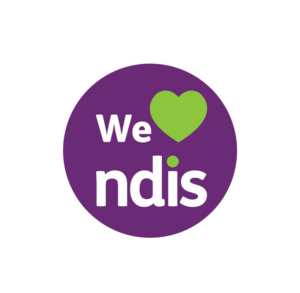Introduction to Eco-Friendly Cleaning
Eco-friendly cleaning refers to the use of cleaning products and practices that are safe for both the environment and human health. It involves using natural ingredients and methods that minimize the use of harmful chemicals and reduce waste. The importance of eco-friendly cleaning cannot be overstated, as it has a positive impact on both our personal well-being and the health of the planet.
Benefits of Eco-Friendly Cleaning
One of the key benefits of eco-friendly cleaning is the improvement of our health. Traditional cleaning products often contain harmful chemicals such as ammonia, bleach, and phthalates, which can cause respiratory problems, skin irritations, and other health issues. By using eco-friendly cleaning products, we can reduce our exposure to these toxins and create a healthier living environment for ourselves and our families.
In addition to the health benefits, eco-friendly cleaning also has a positive impact on the environment. Traditional cleaning products often contain ingredients that are harmful to aquatic life and contribute to water pollution. By using eco-friendly cleaning products, we can minimize our impact on the environment and help protect our waterways and ecosystems.
Furthermore, eco-friendly cleaning is cost-effective in the long run. While eco-friendly cleaning products may have a slightly higher upfront cost, they are often more concentrated and require less product to achieve the same level of cleanliness. This means that they last longer and can save you money in the long term. Additionally, making your own eco-friendly cleaning solutions using natural ingredients can be even more cost-effective.
Harmful Chemicals in Traditional Cleaning Products
Traditional cleaning products often contain a variety of harmful chemicals that can have negative effects on our health and the environment. Some of the most common harmful chemicals found in these products include ammonia, bleach, and phthalates.
Ammonia is a strong irritant that can cause respiratory problems, skin and eye irritation, and even burns. It is commonly found in glass cleaners and oven cleaners. Bleach, another common ingredient in cleaning products, can cause respiratory problems, skin irritations, and eye damage. It is often found in disinfectants and toilet bowl cleaners. Phthalates, which are used as fragrance ingredients in many cleaning products, have been linked to hormone disruption and reproductive problems.
Exposure to these harmful chemicals can have serious health risks, especially for children, pregnant women, and individuals with respiratory conditions. It is important to be aware of the ingredients in the cleaning products we use and opt for eco-friendly alternatives whenever possible.
Natural Ingredients for Eco-Friendly Cleaning
There are a variety of natural ingredients that can be used for eco-friendly cleaning. These ingredients are safe for both human health and the environment, and they are often just as effective as their chemical counterparts.
Some common natural ingredients for eco-friendly cleaning include vinegar, baking soda, lemon juice, and essential oils. Vinegar is a versatile ingredient that can be used as a disinfectant, deodorizer, and stain remover. Baking soda is a gentle abrasive that can be used to scrub surfaces and remove odors. Lemon juice is a natural bleach and deodorizer, and it also has antibacterial properties. Essential oils, such as tea tree oil and lavender oil, can be used to add a pleasant scent to cleaning solutions and provide additional antibacterial properties.
Using natural ingredients for cleaning not only reduces our exposure to harmful chemicals but also helps to protect the environment. These ingredients are biodegradable and do not contribute to water pollution or harm aquatic life.
DIY Eco-Friendly Cleaning Solutions
Making your own eco-friendly cleaning solutions is not only cost-effective but also allows you to have control over the ingredients you use in your home. Here are a few simple recipes for eco-friendly cleaning solutions:
1. All-Purpose Cleaner:
– Mix equal parts water and vinegar in a spray bottle.
– Add a few drops of your favorite essential oil for a pleasant scent.
– Use this solution to clean countertops, floors, and other surfaces.
2. Glass Cleaner:
– Mix equal parts water and vinegar in a spray bottle.
– Spray onto glass surfaces and wipe clean with a microfiber cloth or newspaper.
3. Oven Cleaner:
– Sprinkle baking soda onto the bottom of your oven.
– Spray with water until the baking soda is damp.
– Let sit overnight, then scrub with a sponge or brush and rinse clean.
By making your own cleaning solutions, you can save money, reduce waste from packaging, and have peace of mind knowing exactly what ingredients are being used in your home.
Tips for Reducing Waste While Cleaning
Reducing waste is an important aspect of eco-friendly cleaning. Here are a few tips to help you minimize waste while cleaning:
1. Use reusable cleaning cloths and mops instead of disposable ones. Microfiber cloths are a great option as they can be washed and reused many times.
2. Avoid single-use cleaning wipes and opt for reusable alternatives. You can make your own reusable wipes by cutting up old t-shirts or towels and soaking them in a cleaning solution.
3. Choose concentrated cleaning products that require less packaging and can be diluted with water. This not only reduces waste but also saves you money in the long run.
4. Recycle empty cleaning product containers whenever possible. Check with your local recycling program to see what types of containers they accept.
By being mindful of the waste we generate while cleaning, we can make a positive impact on the environment and reduce our carbon footprint.
Eco-Friendly Cleaning Tools and Equipment
In addition to using eco-friendly cleaning products, using the right tools and equipment can also contribute to a more sustainable cleaning routine. Here are a few examples of eco-friendly cleaning tools and equipment:
1. Microfiber cloths: These cloths are reusable and can be washed and reused many times. They are highly effective at trapping dirt and dust without the need for chemical cleaners.
2. Reusable spray bottles: Instead of buying new spray bottles every time you need a cleaning solution, invest in a few high-quality reusable spray bottles that can be refilled with your homemade cleaning solutions.
3. Broom and dustpan: Instead of using disposable sweeping pads, opt for a broom and dustpan to clean your floors. This reduces waste and is just as effective.
4. Steam cleaner: Steam cleaners use the power of steam to clean and sanitize surfaces without the need for chemical cleaners. They are highly effective and environmentally friendly.
By using eco-friendly cleaning tools and equipment, you can further reduce your impact on the environment and create a healthier living space.
How to Choose Eco-Friendly Cleaning Products
When choosing eco-friendly cleaning products, there are a few factors to consider. First, look for products that are labeled as “green,” “eco-friendly,” or “natural.” These labels indicate that the product has been formulated with ingredients that are safe for the environment and human health.
Second, read the ingredient list on the product label. Avoid products that contain harmful chemicals such as ammonia, bleach, and phthalates. Instead, look for products that use natural ingredients and are free from synthetic fragrances and dyes.
Third, consider the packaging of the product. Look for products that are packaged in recyclable or biodegradable materials. Avoid products that use excessive packaging or single-use plastic containers.
Lastly, do your research and read reviews of the products you are considering. Look for third-party certifications such as the EPA’s Safer Choice label or the Green Seal certification, which indicate that the product has met certain environmental and health standards.
By being mindful of these factors, you can make informed choices when it comes to choosing eco-friendly cleaning products.
Incorporating Eco-Friendly Cleaning into Your Daily Routine
Incorporating eco-friendly cleaning into your daily routine is easier than you might think. Here are a few tips to help you get started:
1. Start by making small changes. Replace one or two cleaning products with eco-friendly alternatives and gradually transition to using more eco-friendly products over time.
2. Make your own cleaning solutions using natural ingredients. This not only reduces waste but also allows you to have control over the ingredients you use in your home.
3. Set aside time each week for cleaning and decluttering. By staying on top of cleaning tasks, you can prevent the buildup of dirt and grime, making cleaning easier and more efficient.
4. Get the whole family involved. Teach your children about the importance of eco-friendly cleaning and involve them in the cleaning process. This not only teaches them valuable life skills but also instills a sense of responsibility for the environment.
By incorporating eco-friendly cleaning into your daily routine, you can create a healthier living environment for yourself and your family while also reducing your impact on the environment.
Conclusion: Making a Positive Impact on the Environment with Eco-Friendly Cleaning
In conclusion, eco-friendly cleaning is not only beneficial for our health but also for the environment. By using natural ingredients, making our own cleaning solutions, reducing waste, and choosing eco-friendly tools and equipment, we can make a positive impact on the environment and create a healthier living space for ourselves and future generations.
The benefits of eco-friendly cleaning are numerous, including improved health, reduced exposure to harmful chemicals, and cost savings. By making small changes in our daily cleaning routine and being mindful of the products and tools we use, we can contribute to a more sustainable future and protect the planet for years to come. So, why not make the switch to eco-friendly cleaning today and start making a positive impact on the environment?


